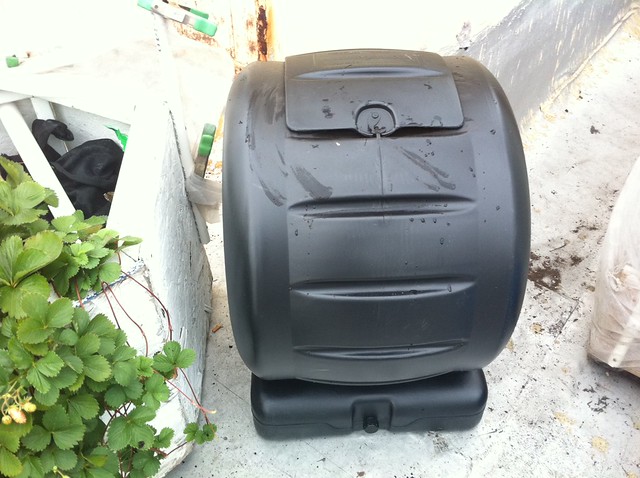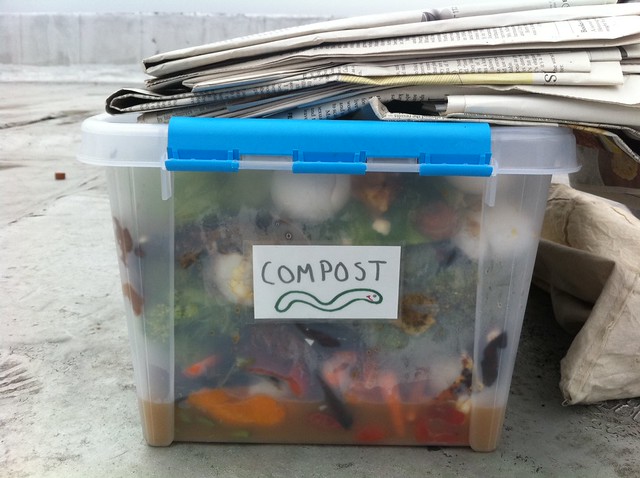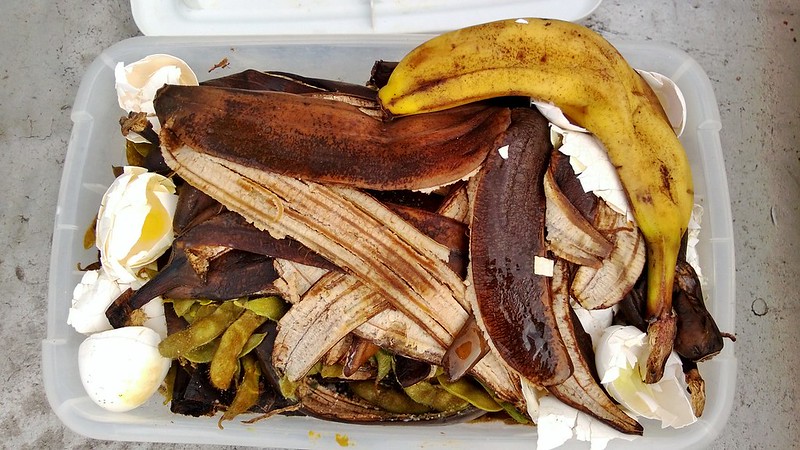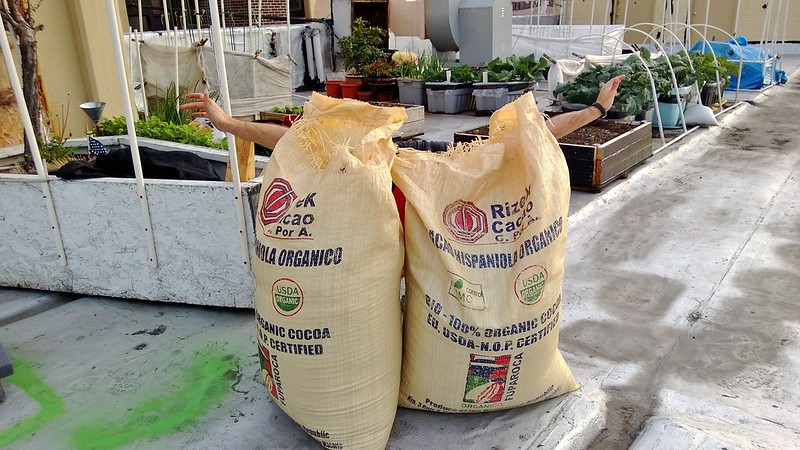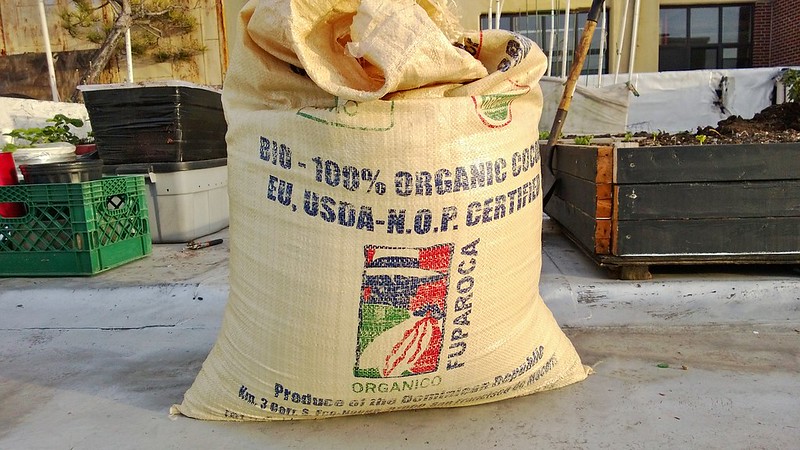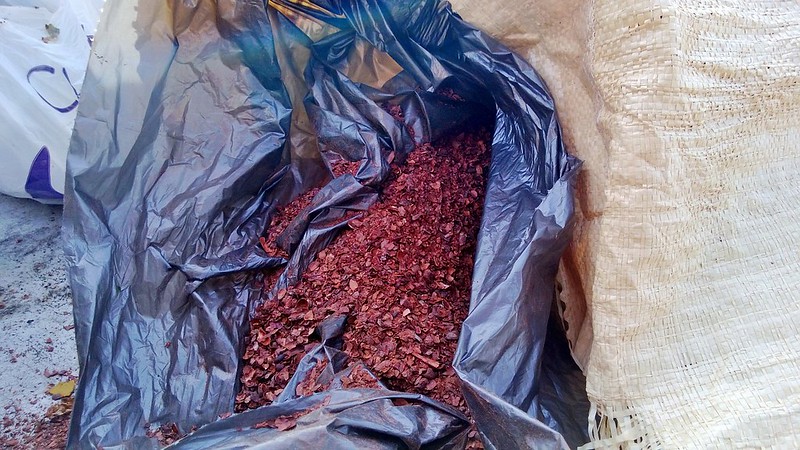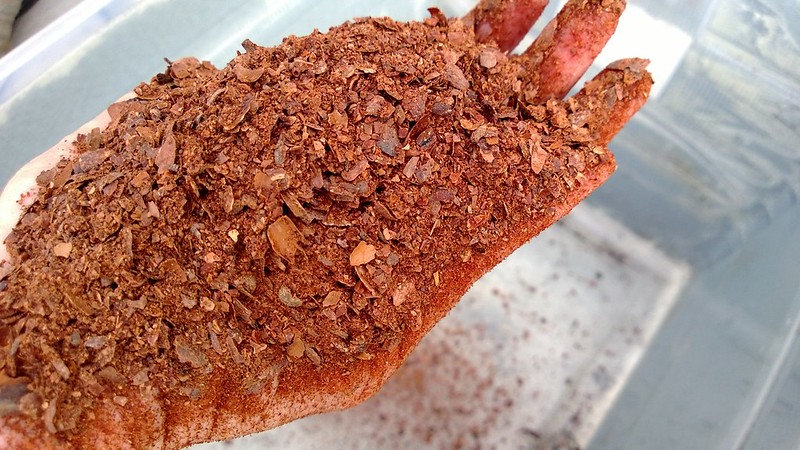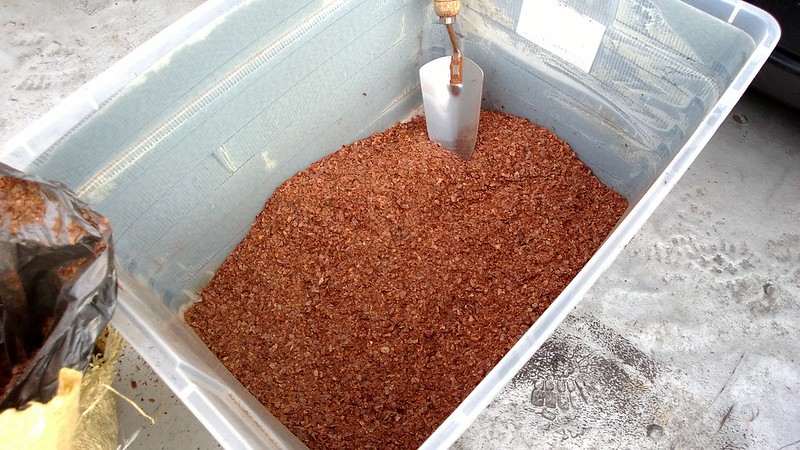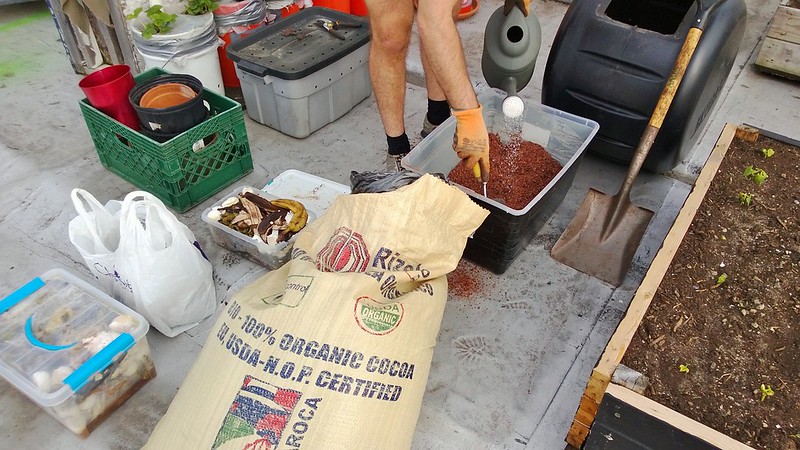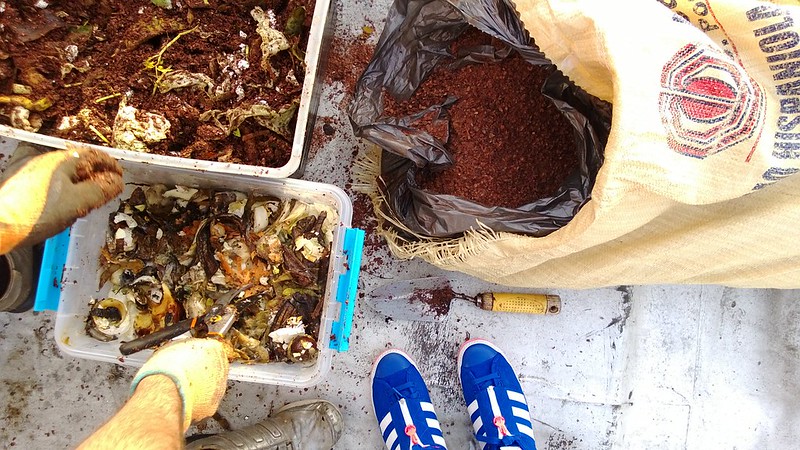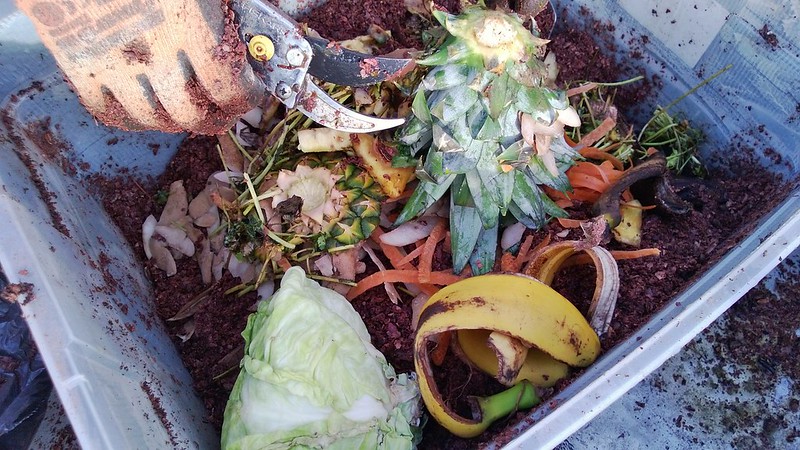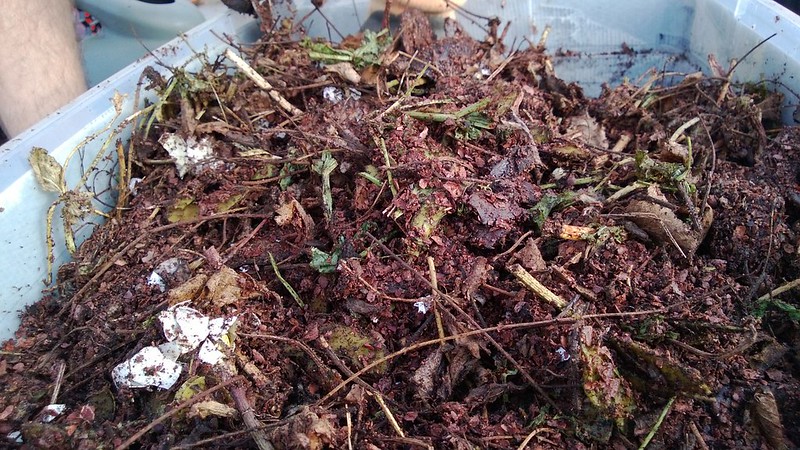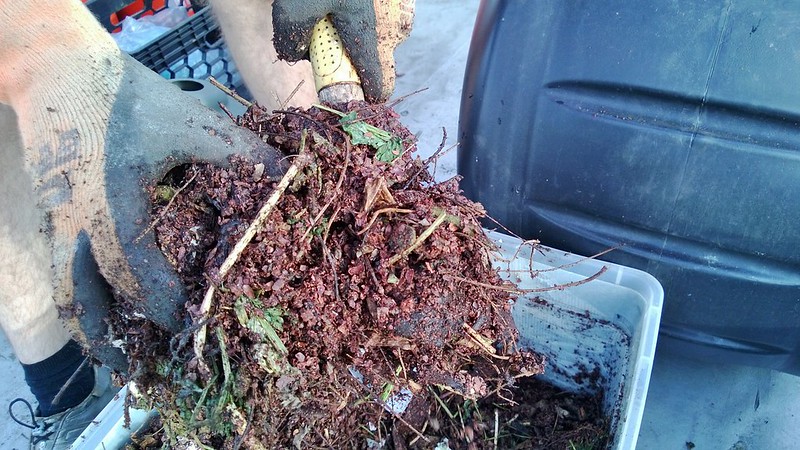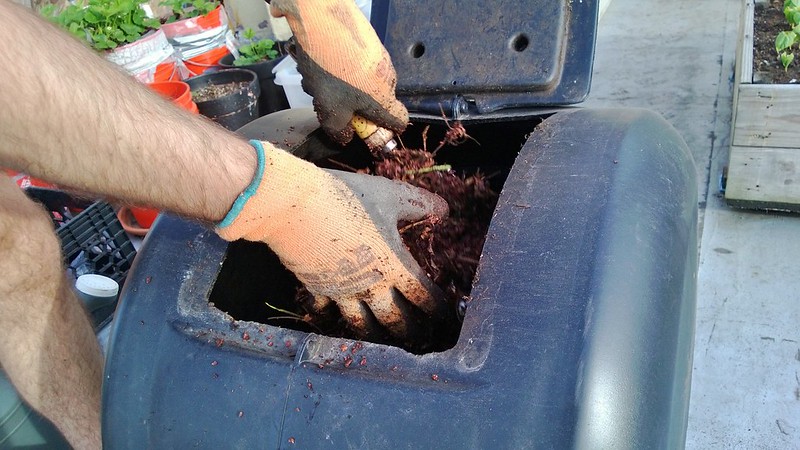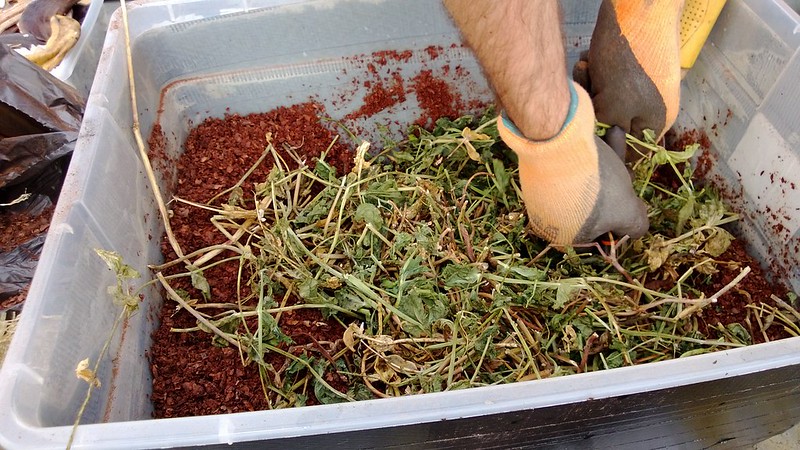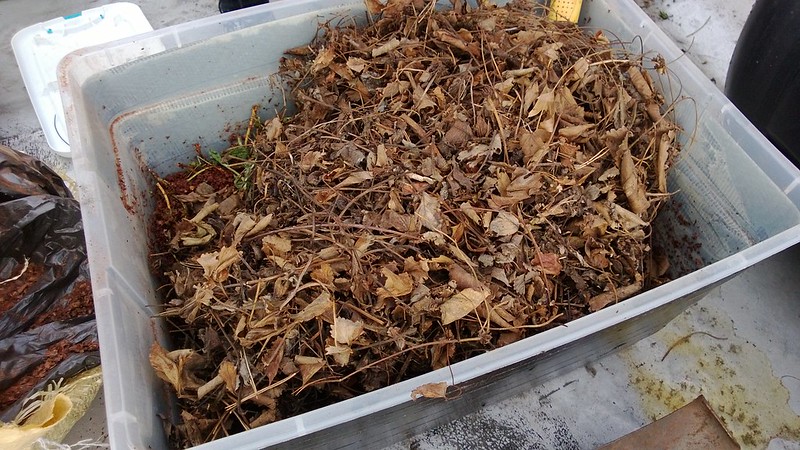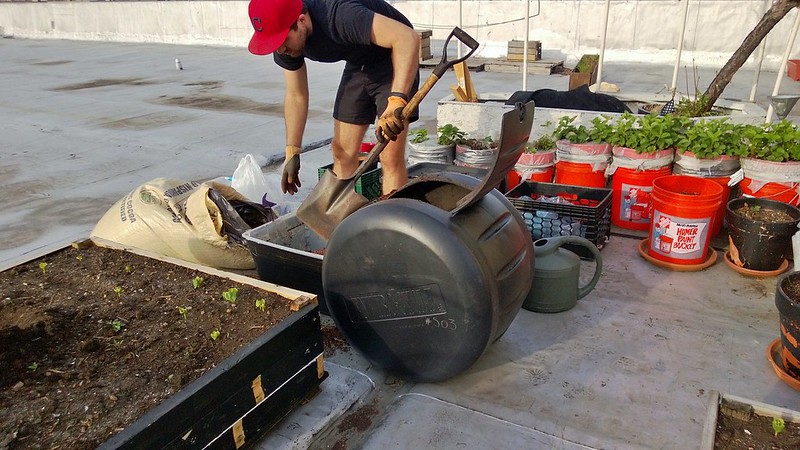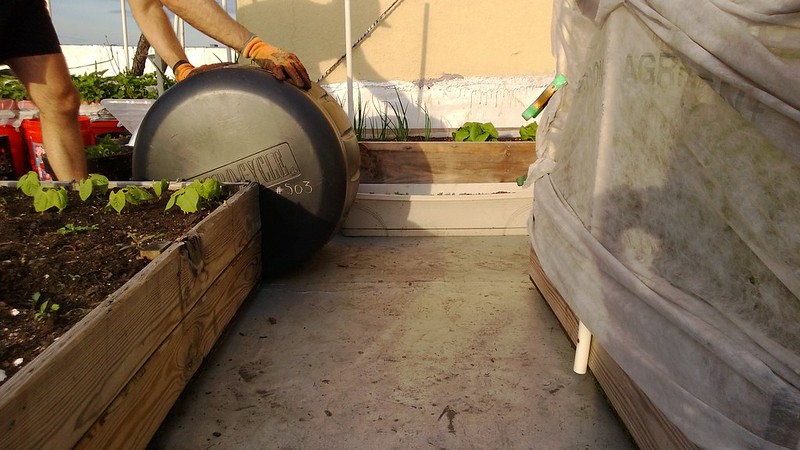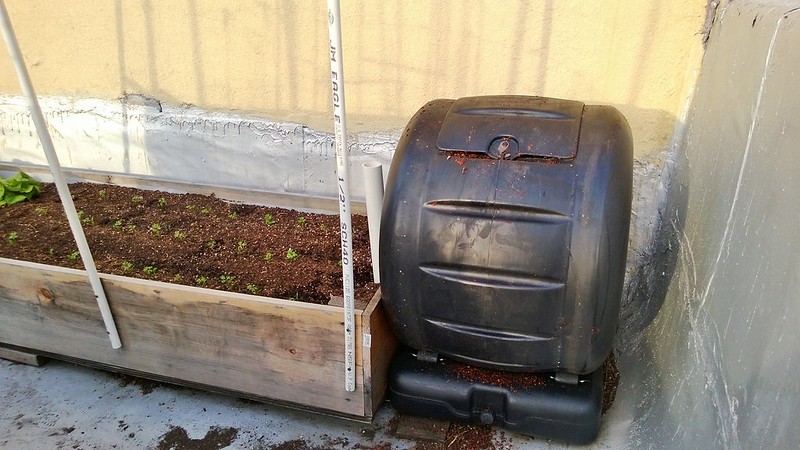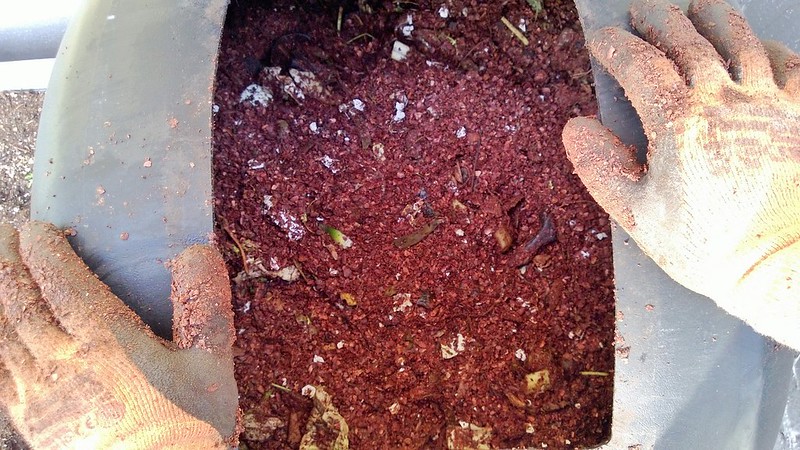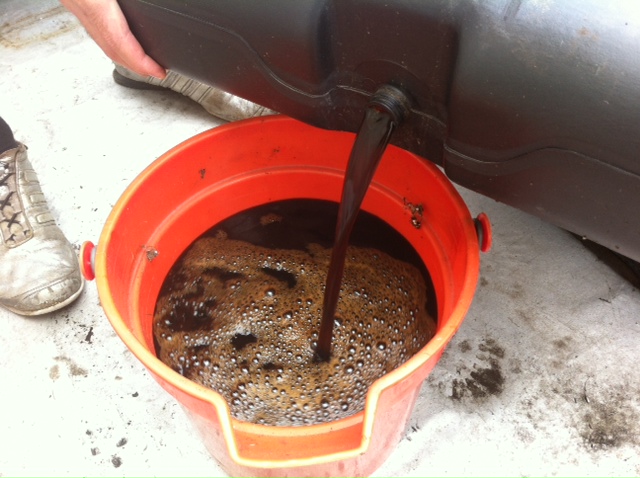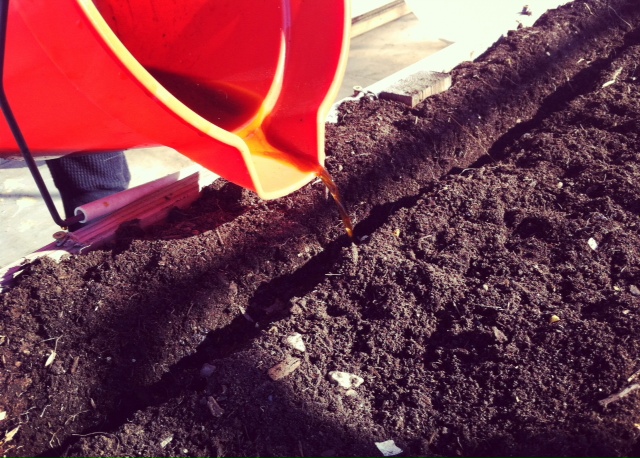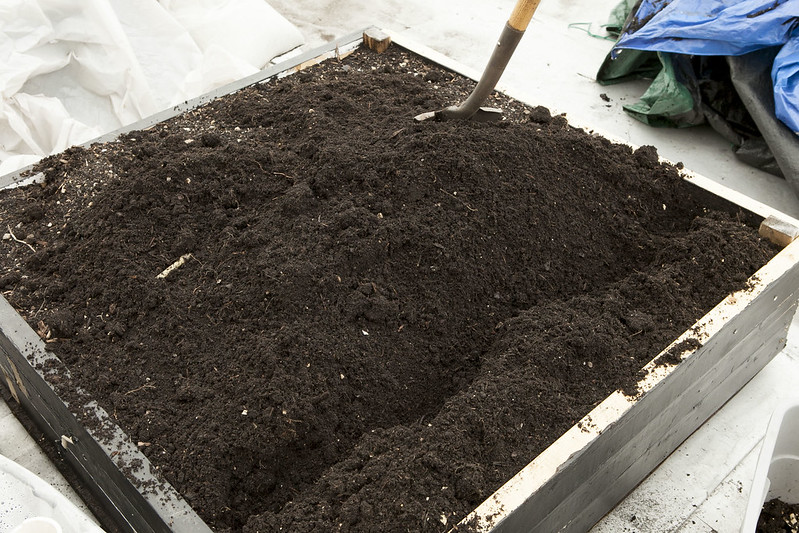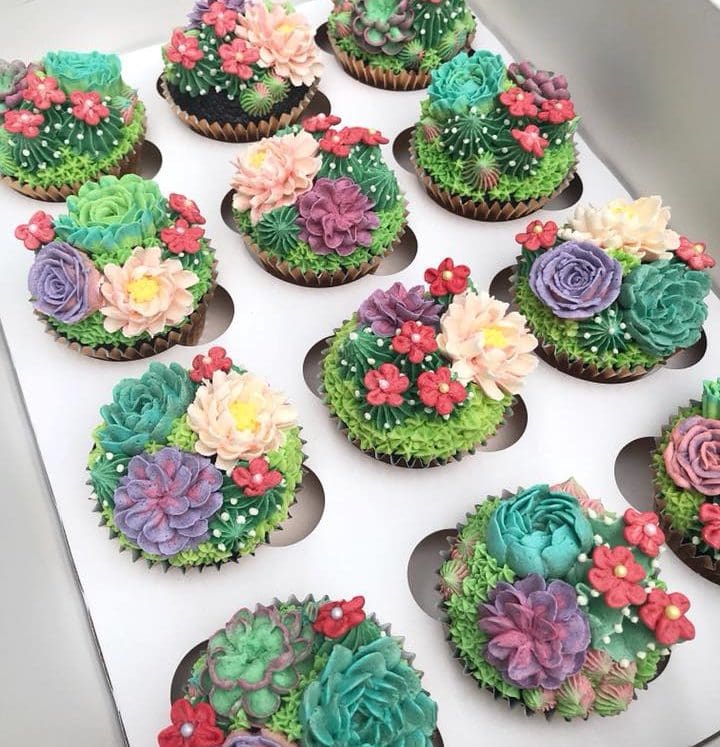We compost because there is no need to put kitchen/garden scraps in the trash when it can be turned into beautiful compost and reused in the garden. Plants love it. The planet loves it. So everyone, put your hands together.. let’s give it up to the star of the hour, compost! How to make compost?Essentially compost is made by mixing 50% green materials with 50% brown materials (1:1 ratio). Store your kitchen scraps (green materials) in the fridge, try to chop them as small as possible as they will decompose more quickly this way. When ready, mix them with your brown materials outside of your tumbler, this will make sure everything gets mixed together evenly. Tumblers have a tendency to clump materials together, keeping them from breaking down, for example if you just toss the greens on top of browns and spin they won’t mix up great. Mixing outside the tumbler beforehand prevents this from happening. While mixing, wet it with a bit of water to start the process. Keep in mind the greens will liquify as they decompose, so you only want to wet it slightly when beginning. Then add everything to your tumbler. Spin your tumbler once a day. Your compost will be ready to use in your garden anywhere from 2-4 months, depending on how much you have, if you have items that are harder to break down. It will take longer if you keep adding things to it, so keep that in mind. Some people have multiple compost piles so they have one that sits, one that can be added on. Tips:Chop your kitchen scraps up if you can. If you have full stems that are tough, this is going to take longer to decompose, so chop them up. Learn what works well. For example avocado pits take years to decompose, so they might not be the best to add to the pile. Other things that take a longer time is corn cobs, peanut shells, fruit pits. Seeds don’t work well for us to compost. The seeds inside of tomatoes will cause tomato plants to grow. I’m not kidding. We used to compost tomato guts then months later the soil would start to grow tomato plants all over. It’s cute, I know, but having 72 tomato plants pop up is a bit intimidating. Don’t let your compost get too wet or it will start to stink. On the other side, don’t let it get too dry or nothing will happen. The cast of characters:The composter, Mr. Composter. This guy is from Envirocycle. We’ve had it for a few years and it rules. It looks nice and does it’s job. Can you ask for more? We use a compost tumbler because it is compact and fast compared to traditional compost piles and a lot less hassle than a worm bin. Our green materials for our compost- kitchen scraps from vegetables, fruits, egg shells. You can also include tea leaves, tea bags, fresh grass clippings, pulp left over from your juicer. Our brown materials for our compost – cocoa husks. You can also include: dry leaves, coffee grounds, shredded newspaper, shredded egg cartons, nuts/shells, twigs and hay. We have had good success using both cocoa husks and hay as our main brown sources. So let’s get started! If you are urban composting, brown materials might be harder to come by than you think. We love to use hay, but it’s really only available during the Fall, so we found a great alternative that can be used year round. This is 100 pound bag of cocoa husks. And yes, it smells as delightful as you would think it does! Mast Brothers which is a delicious chocolate shop in Brooklyn kindly hooked us up with a few hundred pounds of cocoa husks. We picked them up one day and I have to tell you, being in a car with these husks was the best driving in NYC experience I ever had in my life. I never wanted to get out of the car. The great thing about cocoa husks is if you get them from a shop they are probably pretty ground up already which makes the best material. Aren’t the cocoa husks beautiful? They smell good. And I totally tasted it, it tasted good too. So start by adding your brown materials in a container first. Remember we do this before going in the tumbler so it evenly mixes and starts the process. Wet your browns a little bit, not too much! Your greens will liquify but we want to start it… Then start adding your green kitchen scrap materials. Anything big like a pineapple top, chop up. I know it’s extra work in the beginning, but trust me, it’s worth it doing it now instead of waiting 12 months. Then mix it all up so greens and browns are all combined. Then start shoveling your compost mixture into your tumbler. Just like this. Keep doing this until you’re done. Don’t forget, always compost anything left over from the garden. You want to grow a garden, then give it back to the garden. This is the circle of a happy garden life! I would recommend using a big shovel if you have one to mix up your materials. Also don’t forget to stand up and stretch once in a while! This is a good garden workout. 🙂 We filled our tumbler in the front of the garden for extra space, so when it was ready, we just rolled it back to it’s base at the back of the garden. While Matthew rolled it I just sung “Rolling, Rolling, Rolling in the garden”. So now the tumbler is ready to go. Give this guy a spin once a day. Every few days you will start to see everything start to break down and the soil get prettier. Also keep a nose on smell, if it starts to stink it has too much water. The compost should smell Earthy and nice, you should enjoy it! Our tumbler has a base where all the liquids go to. This is called compost tea. It’s a garden gold mine. Empty this out or it will become full and leak. Water your plants with this, they will love you! We love using the compost tea on the areas where seeds were just planted. Seriously, this is magic liquid here, watch your plants grow big! And when it’s time to add in your compost soil, it will be the most beautiful rich color.. just mix it around with your other soil. Then get those plants growing! Happy Composting!

